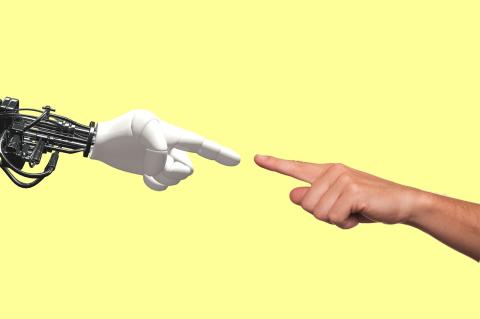Is HMI Shaping the Future of the Auto Industry?

Cars are getting smarter. It’s just a fact. Finally, we are seeing the fruits of the EV and AV labor from the last several years. In the techy world we live in, when one thing advances something else has to for proper integration. For example, connecting your phone to your car, the lights inside your house and your washing machine.
It can get extensive, but for this moment, let’s talk about the integration that makes autonomous driving possible -- HMI, or Human-Machine Interface. Traditionally HMI has been used in your everyday life - touchscreens, phones, keyboards, voice assistants. Any time you interact with a machine, you’re using a HMI.
In vehicles it’s used all the time, and even more so as technology advances with larger screens, access to Alexa in your car, and heads-up 3D displays.
But in AV, it’s used in a whole new way. It ensures safety for the “driver.” It monitors the driver for signs of distraction or drowsiness. Plus it ensures proper 2-way communication between the driver and the vehicle. In AV, the HMI allows the driver to interact with the software on a much more personal level. Think about how a consumer uses a touch screen on their cell phone. They swipe in every direction to navigate and tap on various “buttons” and applications. That level of usability is how HMI in autonomous vehicles works. The driver can control the car voice commands, heads-up displays, haptics, and more.
So what would a fully-integrated HMI in your car look like? Well, it would have all the futuristic features consumers could dream of. Instead of one screen centered in the dash, there will be multiple spanning the whole length of the dash. The front passenger will have their own display, and there will also be displays on the back of the headrests for the back seat passengers to enjoy. A true infotainment system for everyone.
It will be less button pushing and knob turning and more hand gestures and voice recognition. The level of connectivity between car and phone will be as if the driver has their own personal assistant built in. The HMI will do everything -- changing speed, looking up weather forecasts, reviewing traffic conditions, scheduling reminders, selecting music, and answering any random questions that pop into your head.
The HMI will also allow the car to learn its drivers in and out, including body language and ‘sleepy cues’ to help alert the driver if they’re dozing off. Even further, HMI designs include little cameras placed in the car to allow for photo taking and video chats on high quality displays.
The big difference between standard infotainment systems and having an HMI is that it updates itself as things continually change. It won’t become dated, and consumers won’t feel like their phone is miles ahead of their car (like it is now).
The goal of an HMI is to increase safety while driving an autonomous vehicle by limiting reasons the driver would ever have to look away from the road. The heads-up displays placed right in front of the driver will only show the most pertinent information for that given moment. Safety is probably the #1 concern for buyers considering AVs. There are a lot of pieces to the puzzle and they have to fit perfectly every time.
Automakers are moving away from equipping cars with several HMIs, shifting to a multimodal HMI that helps the car sort through a lot of data and only show what is helpful and needed. A Human-Machine Interface also communicates with the cars around it, detecting and giving warnings for anything abnormal. Most have heard of lane assist and adaptive cruise control. These are only a few of the features of a multimodal HMI.
Unfortunately, compared to other places in the world, like China, our automotive tech is way behind modern expectations. There, the technology in cars is way more important than looks are. They have features like changing the atmosphere in the car using lights and music -- movie mode, date night, etc. Their displays are even more intelligent than mobile phone displays here in the U.S. and act as personal assistants that are very lifelike. Drivers can even play video games that are built in with controls on the steering wheel or utilize a karaoke feature. (Yes, the vehicle comes with its own microphone.) Something really cool about HMIs in China is the smart air filtration and self-cleaning mode in vehicles. As health and safety became a bigger priority over the past 2 years, this is a standard feature for most vehicles in China now.
For the US, the ever growing and always changing mobile device arena keeps pushing the bar, and consumers are looking for the same when it comes to interacting with their vehicle. A large portion of car buyers would appreciate an HMI and all the ‘cool’ things they could do without having to lift a finger. Traditional infotainment systems are just not cutting it anymore. The capabilities that a Human-Machine Interface provides are far beyond what is being put in cars today. Western culture trends towards valuing the look and design of a vehicle more than its usability but this may be where things start to merge.
So… how realistic is this? Does it make sense for the average buyer? The AV industry’s value is expected to triple in the next five years. The software and hardware required for the future of car-making will continue to evolve and eventually be the ‘norm.’ Even people who aren’t completely sure about committing have a lot of interest and can be persuaded. It is certain that there will be a distinct divide between the ‘old’ way of making cars and the new way. It may be a little while before this kind of tech is seen in the average driveway, but the designs and plans are here, being refined for the future.






